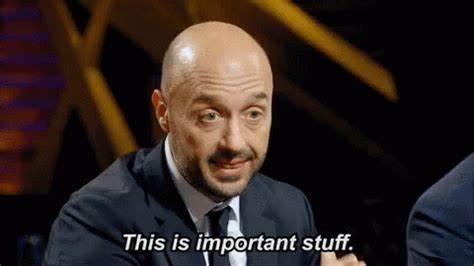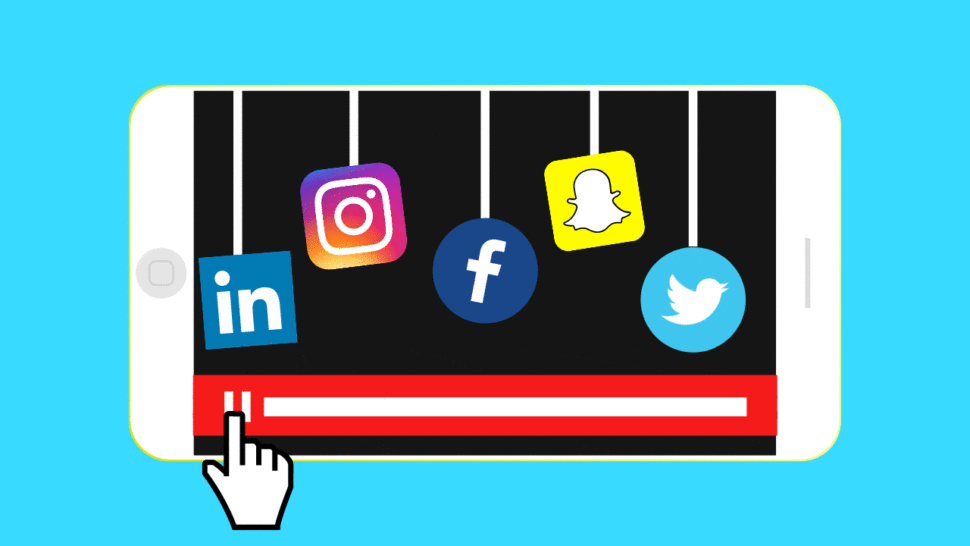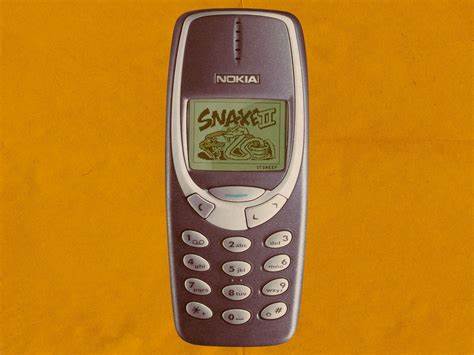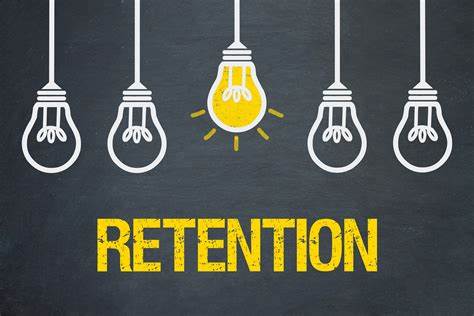Ein altes Sprichwort besagt: Gib einem Mann einen Kunden und er wird einen Verkauf tätigen. Bringen Sie einem Mann erstklassige Kundenbindungsstrategien bei, und er wird ein Leben lang Verkäufe tätigen. Ich paraphrasiere vielleicht ein ein klein wenigaber es ist nicht allzu weit hergeholt.
Die Quintessenz ist diese: Jeder möchte, dass die Kunden wiederkommen.. Aber das ist nicht immer eine Selbstverständlichkeit. In der Tat 77 % der Kunden würden ein Unternehmen schon nach einer einzigen positiven Erfahrung weiterempfehlen, aber es braucht 12 positive Kundenerfahrungen um eine negative Erfahrung auszugleichen.

Wie schaffen Sie es also, dass Ihre Kunden immer wieder kommen? Und was vergrault sie, was Sie unbedingt vermeiden sollten? Lesen Sie weiter und finden Sie es heraus!
Was ist Kundenbindung?
Einfach ausgedrückt, bezieht sich Kundenbindung auf die Strategien und Maßnahmen, die ein Unternehmen ergreift, um seine bestehenden Kunden über einen längeren Zeitraum zu halten. In der Regel geht es darum, dauerhafte Beziehungen zu den Kunden aufzubauen, damit sie immer wieder zurückkommen. Diese Strategie wird in der Regel eingesetzt, um Wiederholungskäufe zu generieren, kann aber auch dazu dienen, die Kundentreue zu erhöhen und die kontinuierliche Bindung an Ihre Marke zu fördern.
Das Ziel der Kundenbindung besteht darin, den Wert jedes einzelnen Kunden zu maximieren, indem sichergestellt wird, dass er sich weiterhin für Ihre Produkte oder Dienstleistungen entscheidet und nicht für die der Konkurrenz. Dazu gehört, dass Sie Ihren Kunden ein außergewöhnliches Erlebnis bieten, auf ihre Bedürfnisse eingehen und ihnen auch nach dem ersten Kauf einen kontinuierlichen Mehrwert bieten. Eine hohe Kundenbindungsrate zeigt, dass die Kunden zufrieden und engagiert sind und die von Ihnen angebotenen Produkte oder Dienstleistungen zu schätzen wissen.
Es gibt mehrere Kennzahlen, die unter den Begriff der Kundenbindung fallen:
- Kundenzufriedenheit
- Personalisierung
- Wirksame Kommunikation
- Loyalitätsprogramme
- Außergewöhnlicher Kundenservice
- Qualitätsprodukte und -dienstleistungen
- Mehrwertige Dienstleistungen
- Zuhören und auf Kundenfeedback reagieren
- Gemeinschaftliches Gebäude
Es gibt zwar noch viele weitere Faktoren, die bei der Kundenbindung zu berücksichtigen sind, aber das sind die wichtigsten.

Aber welche Vorteile hat die Kundenbindung für Ihr Unternehmen?
Vorteile der Kundenbindung
Einige der Vorteile der Kundenbindung sind verblüffend offensichtlich. Aber es lohnt sich, sie alle an einem Ort zusammenzufassen, damit Sie sehen können, wie wichtig es ist, wirksame Kundenbindungsstrategien.
- Höherer Umsatz und durchschnittlicher Auftragswert: 61 % der Inhaber kleiner Unternehmen gaben an, dass der Großteil ihrer Einnahmen von bestehenden Kunden stammt und dass Stammkunden 67 % mehr ausgeben als neue Kunden.
- Kosteneinsparungen: Die Gewinnung neuer Kunden kann hohe Marketingkosten verursachen, während die Bindung bestehender Kunden weniger kostet, weil Sie bereits eine Beziehung zu ihnen haben.
- Stetiger Cashflow: Ein treuer Kundenstamm sorgt für stetige und besser vorhersehbare Einnahmen im Gegensatz zu neuen Kunden, die eher sporadisch auftreten können.
- Mund-zu-Mund-Propaganda: Kunden, die Ihre Marke lieben, empfehlen Ihre Produkte oder Dienstleistungen mit größerer Wahrscheinlichkeit an Freunde, Familienmitglieder oder Kollegen weiter. Wenn es Ihnen gelingt, Ihre Kunden für Ihre Marke zu begeistern, werden sie Ihr Marketing für Sie übernehmen.
- Höhere Konversionsraten für neue Produkte: Wenn Sie ein neues Produkt oder eine neue Dienstleistung auf den Markt bringen, verfügen Sie über einen treuen Kundenstamm, der mit größerer Wahrscheinlichkeit konvertiert als kalte Leads.
- Feedback für Verbesserungen: Treue Kunden sind eher bereit, wertvolles Feedback zu geben - schließlich sind sie diejenigen, die Ihr Produkt am meisten nutzen. So können Sie verbesserungswürdige Bereiche identifizieren und eine positive Feedbackschleife schaffen, indem Sie ihnen zuhören.
- Markentreue: Treue Kunden sind weniger geneigt, Sie für einen schicken neuen Konkurrenten zu verlassen. Sie verzeihen gelegentliche Fehler eher.
- Langfristiges Wachstum: Eine Vielzahl treuer Kunden bietet eine hervorragende Grundlage für die Planung von langfristigem Unternehmenswachstum und Nachhaltigkeit.
- Emotionale Verbindung: Langjährige Kunden entwickeln oft eine emotionale Bindung zu ihrer Lieblingsmarke, was zu höherer Kundenzufriedenheit, Loyalität und Fürsprache führt.
Das ist alles schön und gut, aber welche Strategien können Sie umsetzen, um die Kundenbindung zu erhöhen, damit Sie einige der oben genannten Vorteile nutzen können?

Geduld, junger Padawan. Hier sind 15 Möglichkeiten, wie Sie Ihre Kundenbindungsstrategien aufwerten können.
15 Kundenbindungsstrategien, die tatsächlich funktionieren
1. Personalisierte Kommunikation
Eine der wichtigsten Möglichkeiten, die Kundenbindung zu erhöhen, besteht darin, die Kommunikation mit Ihren Kunden zu personalisieren. Niemand möchte wie ein allgemeiner, gesichtsloser Klumpen behandelt werden. Wenn Ihre Kommunikation personalisiert ist, kann das viel bewirken. Selbst etwas so Einfaches wie die Verwendung des tatsächlichen Namens des Kunden in E-Mails anstelle von "Kunde".
Wenn Sie persönliche Angebote versenden, die auf den Vorlieben, der Kaufhistorie und dem Kaufverhalten des Kunden basieren, zeigen Sie ihm, dass Sie seine persönliche Situation schätzen. Machen Sie es richtig und der Kunde wird es lieben. Machen Sie es falsch, werden sie abgewiesen.
Tatsächlich nennen 78 % der Kunden personalisierte Kommunikation als einen der Gründe, warum sie mit größerer Wahrscheinlichkeit wieder einkaufen würden.
2. Loyalitäts-Programme
Kundenbindungsprogramme sind wichtiger, als Sie vielleicht denken. Zum Beispiel, 57% der Kunden geben mehr Geld für Marken aus, denen sie treu sind. Wenn ein Kunde an Ihrem Kundenbindungsprogramm teilnimmt, steigt die Wahrscheinlichkeit, dass er erneut kauft und sich in Zukunft wieder mit Ihrer Marke beschäftigt.
Derzeit 19% der Mitglieder von Treueprogrammen das Gefühl, etwas Besonderes zu sein und von Markenvertretern anerkannt zu werden. Das ist nicht viel, aber wenn man es mit den 57 % der Kunden vergleicht, die mehr für Marken ausgeben, denen sie treu sind, zeigt sich, dass es sich lohnt, die Kommunikation zu personalisieren und treuen Kunden das Gefühl zu geben, dass sie mehr wahrgenommen werden. Sie werden mehr für Ihre Marke ausgeben.

3. Außergewöhnlicher Kundenservice
89% der Unternehmen halten einen hervorragenden Kundenservice für ein wesentliches Element der Kundenbindung. Indem Sie sicherstellen, dass Ihr Kundendienstteam reaktionsschnell, freundlich und hilfsbereit ist, zeigen Sie Ihren Kunden, dass Ihnen ihre Zufriedenheit wirklich am Herzen liegt.
Dies kann auf verschiedene Weise erreicht werden. Eine der besten ist die Verwendung eines Stimme des Kunden-Tools wie tl;dv , um die Worte Ihrer Kunden in klarer Form zu erfassen. Diese Art von Filmmaterial kann zu Clips oder Rollen zusammengestellt und mit Ihrem Kundendienstteam, Ihrem Produktteam und Ihrem Vertriebsteam geteilt werden, um sicherzustellen, dass ein effizienter Verbesserungsprozess beginnen kann.
4. Regelmäßiges Engagement
Halten Sie Ihre Kunden bei der Stange, indem Sie ihnen relevante Inhalte wie Newsletter, Blogbeiträge oder Branchen-Updates schicken. So bleibt Ihre Marke im Gedächtnis der Kunden, auch wenn sie nicht aktiv einkaufen.
Untersuchungen zeigen, dass hoch engagierte Kunden 90 % häufiger kaufen und durchschnittlich 60 % mehr pro Transaktion ausgeben.
5. Sammlung von Rückmeldungen
Holen Sie aktiv das Feedback und die Meinungen Ihrer Kunden ein. Holen Sie sie nicht nur ein, sondern reagieren Sie auch auf sie. Das zeigt nicht nur, dass Sie ihre Meinung zu schätzen wissen, sondern hilft Ihnen auch, Verbesserungsmöglichkeiten zu erkennen. Wenn Ihre treuen Kunden alle dasselbe sagen, ist das wahrscheinlich ein deutliches Zeichen dafür, dass sie etwas auf dem Kasten haben. Ihre Kunden sind klug. Geben Sie ihnen die Anerkennung, die sie verdienen, und lassen Sie sie mitbestimmen, wie Ihr Produkt funktioniert.
Es ist erwähnenswert, dass 77 % der Kunden eine positivere Meinung über Marken haben, die um Kundenfeedback bitten und dieses akzeptieren.
@tldv.io Wir lieben konstruktive Kritik #productmanager #product #tech #productmanagement #corporatehumor #startup
♬ Originalton - tldv.io - KI-Meeting-Recorder
Die beste Möglichkeit, Kundenfeedback einzuholen, ist das persönliche Gespräch. Das ist jedoch nicht immer möglich - vor allem nicht für remote und globale Teams. In diesem Fall sollten Sie ein remote wie tl;dv , um Erkenntnisse zu sammeln und sie auf einfache Weise mit Stakeholdern und den Entscheidungsträgern Ihres Unternehmens zu teilen.
6. Überraschen und erfreuen
Wer liebt keine Überraschungen? Vielleicht sollten Sie sie nicht überrumpeln, wenn sie allein zu Hause sind, aber ab und zu eine E-Mail mit einem kostenlosen Geschenk zu schicken, ist nie eine schlechte Idee. Das Geschenk muss auch nicht unbedingt etwas Materielles sein. Es könnte ein super exklusives Angebot oder ein zeitlich begrenztes Angebot für Leinwand-Fotodrucke sein, für Ihre coolsten Kunden.
Diese Art der Überraschung für Ihre Kunden schafft eine positive emotionale Bindung und erhöht die Markentreue. Eine kürzlich durchgeführte Studie besagt, dass begeisterte Kunden mit größerer Wahrscheinlichkeit an das Unternehmen gebunden werden und somit eher loyal werden.
7. Ausschließlichkeit
Apropos Exklusivität: Wenn Sie Ihren Stammkunden exklusiven Zugang zu neuen Produkten, Dienstleistungen oder Veranstaltungen bieten, geben Sie ihnen das Gefühl, etwas Besonderes zu sein und geschätzt zu werden. Es ist, als ob sie Teil eines geheimen Clubs wären, in dem sie VIP-Mitglieder sind. Sie erhalten einen Vorteil gegenüber dem Durchschnittskäufer, und das kann ein starkes Gefühl sein.
Es ist nicht nur ein großartiges Instrument, um Angebote zu machen, sondern auch eine gute Kundenbindungsstrategie, wenn Sie einen bestimmten Bereich ansprechen wollen. Wenn Sie zum Beispiel möchten, dass mehr Nutzer Ihre App herunterladen, können Sie exklusive Angebote für Mobiltelefone anbieten. In der Tat war dies die Top-Mobilstrategie, die Vermarkter 2019 eingesetzt haben.
8. Gemeinschaftliches Gebäude
Schaffen Sie ein Gefühl der Zugehörigkeit, indem Sie eine Gemeinschaft rund um Ihre Marke aufbauen. Im Idealfall können Kunden miteinander interagieren, Erfahrungen austauschen und sich gegenseitig unterstützen. Dies ist auch ein guter Weg, um alle Ihre wiederkehrenden Kunden an einem Ort zu versammeln.
74,5 % der Kunden sind der Meinung, dass sie sich durch den Zugang zu einer Online-Community als Kunde mehr wertgeschätzt fühlen.
9. Kontinuierliche Verbesserung
Es sollte selbstverständlich sein, dass die kontinuierliche Verbesserung ein wichtiger Eckpfeiler für die Kundenbindung ist. Niemand möchte mit einer Marke zusammenarbeiten, die noch im Jahr 2010 verhaftet ist. Wir werden später mehr über diese Marken erfahren, aber der Schlüssel ist das ständige Streben nach einem besseren Nutzererlebnis. Wenn Sie Ihren Kunden in den Mittelpunkt Ihrer Geschäftsentscheidungen stellen, gewinnen Sie Kunden fürs Leben.
Und denken Sie immer daran: Eine Steigerung der Kundenbindung um 5 % kann zu einer Gewinnsteigerung von 25-95 % führen.

10. Segmentierung
Durch die Segmentierung Ihrer Kunden in verschiedene Gruppen, die auf bestimmten Merkmalen, Verhaltensweisen, Vorlieben oder demografischen Daten basieren, können Sie Ihre Kundenbindungsstrategien effektiver gestalten. Verwenden Sie ein Stimmungsanalyse-Tool wie tl;dv , um Ihre Kunden mit Hilfe von KI genau zu gruppieren.
Ein Beispiel für die Segmentierung ist das Anbieten lokaler Angebote für verschiedene geografische Gebiete. Wenn in den USA der Unabhängigkeitstag gefeiert wird, können Sie Ihre amerikanischen Kunden rechtzeitig zum 4. Juli ansprechen. Aber Sie wollen nicht Ihre britischen Kunden mit demselben Angebot ansprechen.
Eine weitere gute Möglichkeit, Ihre Kunden zu segmentieren, ist die Einteilung in Gruppen, die eine erneute Ansprache erleichtern. Wenn zum Beispiel jemand eine Beschwerde eingereicht hat, könnte diese Person in ein Segment mit anderen unzufriedenen Kunden eingeordnet werden. Auf diese Weise können Sie versuchen, ihre Probleme in Ihrer Kundenbindungskampagne zu lösen.
11. Kampagnen zur Wiedereingliederung
Dies sollte Teil jeder Kundenbindungsstrategie sein. Ermitteln Sie inaktive oder ruhende Kunden und führen Sie gezielte Kampagnen durch, um sie zurückzugewinnen. Das Anbieten von Anreizen oder das Erinnern an den Wert, den Sie bieten, kann ihr Interesse wieder wecken. Dies lohnt sich, denn die Wahrscheinlichkeit 70% höhere Wahrscheinlichkeit einen alten Kunden wieder anzusprechen, als einen neuen Kunden zu gewinnen.
12. Multi-Channel-Präsenz
Es ist wichtig, dort zu sein, wo Ihre Kunden sind. Es ist sinnlos, den ganzen Tag auf Facebook zu posten, wenn Ihre Kunden auf TikTok sind. Wenn Sie Ihre Kunden wie Ihre Westentasche kennen, können Sie Inhalte für sie genau dort erstellen, wo sie sie sehen werden. Pflegen Sie eine Präsenz auf verschiedenen Social-Media-Plattformen, per E-Mail und ggf. auch vor Ort.
Wollen Sie etwas Verrücktes hören? Unternehmen mit Omnichannel-Kundenbindungsstrategien binden durchschnittlich 89 % ihrer Kunden an sich, während die Kundenbindungsrate bei Unternehmen mit schwacher Omnichannel-Kundenbindung bei 33 % liegt.

13. Rechtzeitige Folgemaßnahmen
Setzen Sie sich nach dem Kauf mit den Kunden in Verbindung, um sicherzustellen, dass sie zufrieden sind, und gehen Sie auf etwaige Bedenken ein. Damit zeigen Sie, dass Ihnen die Zufriedenheit Ihrer Kunden am Herzen liegt. Außerdem haben die Kunden das Gefühl, dass ihre Meinung wichtig ist und geschätzt wird. Das Wichtigste bei all diesen Kundenbindungsstrategien ist, dass Sie den Kunden wirklich an die erste Stelle setzen und sich aufrichtig um ihn kümmern. Wenn Sie nur vortäuschen, um mehr Umsatz zu machen, wird der Kunde durch Sie hindurchsehen wie durch ein Glasfenster. Kultivieren Sie eine authentische kundenzentrierte Kultur bei der Arbeit und Sie können nichts falsch machen.
Kundenorientierte Unternehmen sind 60 % rentabler als solche, die den Kunden nicht in den Mittelpunkt stellen. Behalten Sie das im Hinterkopf...
14. Daten wirksam einsetzen
Der Wert von Daten steht nicht zur Debatte. Sie sind das Lebenselixier einiger der größten Unternehmen, die es gibt, darunter Facebook, Alphabet (Google), Amazon und sogar Tesla. Sie können Ihre Datenanalysen nutzen, um Einblicke in das Verhalten, die Vorlieben und die Muster Ihrer Kunden zu gewinnen. Nutzen Sie diese Informationen, um Ihre Strategien effektiver zu gestalten.
Starbucks hat bereits 2014 damit begonnen, Spiele über sein Kundenbindungsprogramm zu versenden. Im Jahr 2016 begannen sie jedoch, ihre Spiele durch die Nutzung ihrer Kundendaten individuell anzupassen. Dadurch konnten die Ergebnisse der Marketingkampagne um 300 % gesteigert werden. Dies ist nur ein Beispiel dafür, wie die Nutzung von Kundendaten das Spiel verändern kann.
Denken Sie immer daran, dass der Besitz von Daten ein kontroverses Thema ist. Vergewissern Sie sich, dass Sie die volle Erlaubnis und Zustimmung erhalten, bevor Sie die Daten Ihrer Kunden nutzen, um sie effizienter anzusprechen.
15. Langfristiger Aufbau von Beziehungen
62 % der Kunden, die einer Marke vertrauen, bleiben ihr mit größerer Wahrscheinlichkeit treu.
Konzentrieren Sie sich auf den Aufbau echter, langfristiger Beziehungen, anstatt nur auf einmalige Transaktionen zu setzen. Dieser kundenzentrierte Ansatz schafft Vertrauen und Loyalität. Indem Sie gesunde Beziehungen zu Ihren Kunden pflegen, sorgen Sie nicht nur dafür, dass sie Jahr für Jahr wiederkommen, sondern auch dafür, dass sie Ihre Marke als erste empfehlen, wenn sie mit Freunden sprechen, die ein ähnliches Produkt benötigen.

5 Katastrophen bei der Kundenbindung: Eine Lektion, was zu vermeiden ist
Nicht alle Strategien zur Kundenbindung verlaufen nach Plan. Manchmal ändern unvorhergesehene Umstände alles, oder manchmal bleiben Unternehmen in ihren Gewohnheiten stecken und weigern sich, sich an die neuen Herausforderungen und Veränderungen anzupassen, die das Leben für sie bereithält. Hier sind fünf berühmte Fälle, in denen Kunden gezwungen waren, die Marke fallen zu lassen wie eine Tüte Schnupfen.
1. Nokia
Erinnern Sie sich an Nokias? Sie waren wie Ziegelsteine gebaut, konnten einen Sturz von einem Wolkenkratzer überleben und waren praktisch das erste Mobiltelefon für alle, die vor dem Jahr 2000 geboren wurden. Jeder liebte sie. Sie hatten Snake und den Hurdy-Gurdy-Klingelton. Was gab es da nicht zu lieben?
Nun, als Smartphones aufkamen, blieben die Nokias stumm. Im Jahr 2007 besaß Nokia fast 50 % des Marktanteils bei Mobiltelefonen. Nur sechs Jahre später war der Anteil auf 3 % gesunken. Apple und Samsung brachten Touchscreens auf den Markt, aber Nokia blieb in der Vergangenheit und war überzeugt, dass Touchscreens nur eine Modeerscheinung sein würden. Das Unternehmen wurde selbstgefällig und verpasste die Bedeutung der Software zugunsten der Hardware.
Dieses Desaster ist darauf zurückzuführen, dass sie ihre Kunden - die Telefonbenutzer - ignorierten und ihren eigenen Prognosen vertrauten, während sich der Markt um sie herum veränderte. Als sie erkannten, was zu tun war, war es bereits zu spät. Der Schaden war bereits angerichtet.

2. Blockbuster
Blockbuster, einst ein marktbeherrschendes Unternehmen in der Videoverleihbranche, erlitt ein ähnliches Schicksal wie Nokia. Das Unternehmen hat es versäumt, sich an das veränderte Verbraucherverhalten und die Technologie anzupassen. Das Unternehmen investierte nicht genug in Online-Streaming und den digitalen Vertrieb, was letztlich zu seinem Untergang führte.
Vergleichen Sie sie mit Netflix, das mit einem ähnlichen Verleihgeschäft begann. Sie stürzten sich auf die Idee des Online-Streamings und sind heute der unangefochtene König des Streamings. Auch wenn ihre Konkurrenten sie langsam einholen, haben sie haben sie immer noch über 50 % Marktanteil.
3. MySpace
Video tötete den Radiostar, und Facebook tötete den MySpace-Star. MySpace war nicht in der Lage, eine nahtlose und benutzerfreundliche Erfahrung zu bieten, wie es Facebook tat. Das unübersichtliche Design, die langsamen Ladezeiten und das Fehlen wirksamer Datenschutzkontrollen veranlassten die Nutzer, zu attraktiveren Alternativen zu wechseln.
Sie konnten einfach nicht mit ihren Konkurrenten mithalten.
4. Lücke
Gap gibt es zwar immer noch, aber 2010 kam es zu einem Zwischenfall, als das Unternehmen beschloss, sein Logo neu zu gestalten. Die Kunden und die Design-Community reagierten durchweg negativ. Die Reaktionen zeigten, dass die Kunden eine starke emotionale Bindung an das alte Logo hatten.
Als Gap auf seine Kunden hörte, kehrte das Unternehmen schnell zum ursprünglichen Logo zurück. Dies ist ein perfektes Beispiel dafür, wie wichtig es ist, auf die Meinung der Kunden zu hören, sie zu verstehen und zu respektieren.

5. Vereinigte Fluggesellschaften
Im Jahr 2017 sah sich United Airlines mit einer massiven PR-Krise konfrontiert, als ein Video, das zeigt, wie ein Passagier gewaltsam aus einem überbuchten Flug entfernt wird, viral ging. Der Vorfall warf ein Schlaglicht auf den schlechten Kundenservice und die Missachtung der Passagierrechte durch das Unternehmen. Die negative Publicity wirkte sich nachteilig auf den Ruf der Fluggesellschaft und die Kundenbindung aus.
Um das Drama auszugleichen, mussten sie den Kunden größere Belohnungen anbieten. Überbuchten Passagieren konnten Reisegutscheine im Wert von bis zu 10.000 Dollar angeboten um Flüge umzubuchen, nachdem dieses Ereignis eingetreten war. Inzwischen haben sie einige ihrer Kunden zurückgewonnen, aber die anfänglichen Auswirkungen des Ereignisses waren definitiv ein Grund zur Sorge.
Binden Sie Ihre Kunden
Die Kundenbindung ist heute wichtiger als je zuvor. Ein treuer Kunde gibt mehr Geld aus, empfiehlt Ihre Marke häufiger weiter und entscheidet sich eher für Sie als für Ihre Mitbewerber. Je mehr Kunden zu Ihnen zurückkehren, desto besser wird Ihr Geschäft laufen.
Wir hoffen, Sie haben genug über Kundenbindungsstrategien gelernt, um sie sofort umsetzen zu können. tl;dv für Google Meet herunterladen oder Zoom und beginnen Sie noch heute damit, die Beziehungen zu Ihren Kunden zu stärken.














